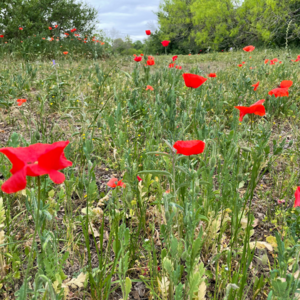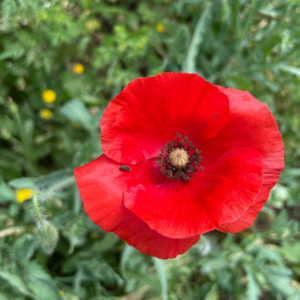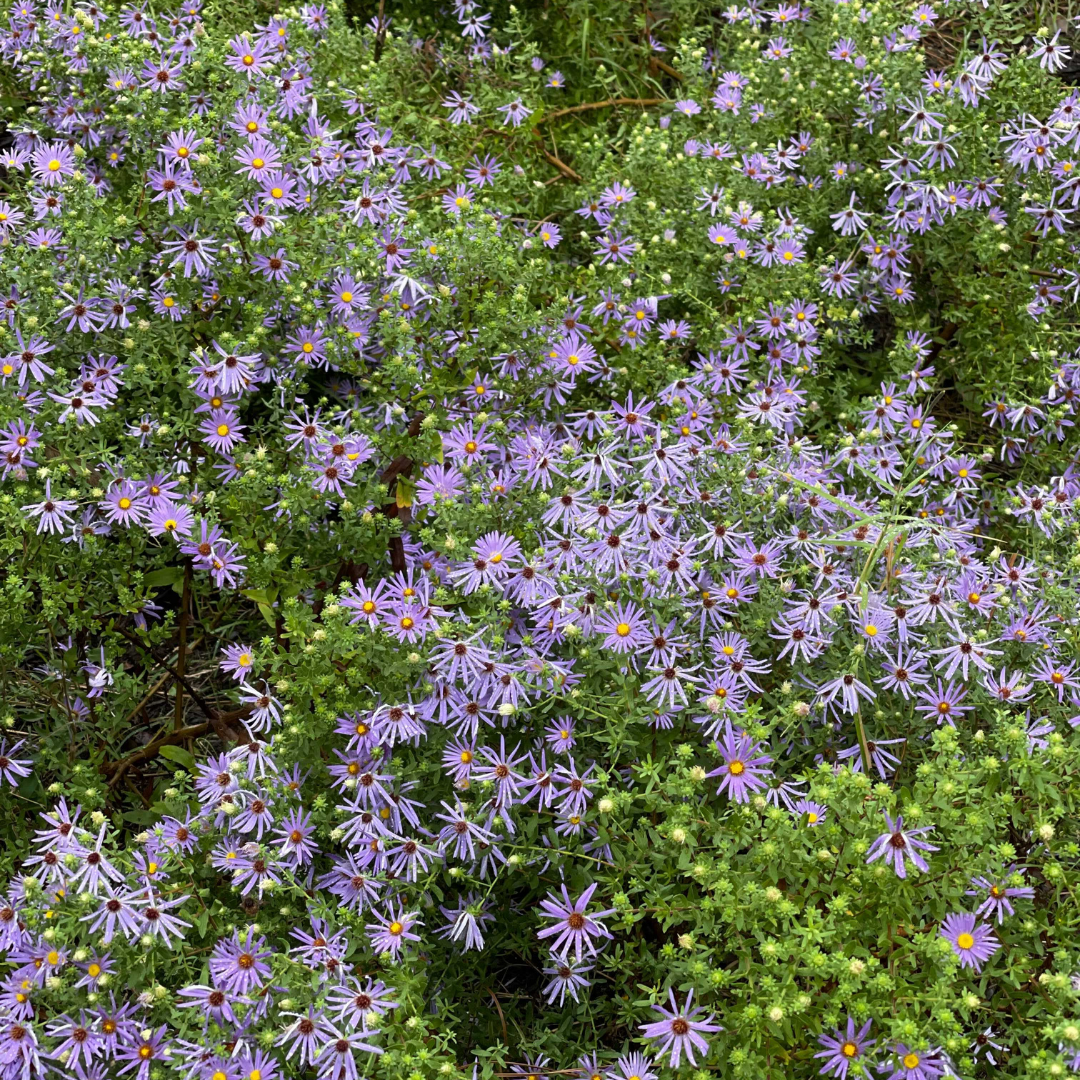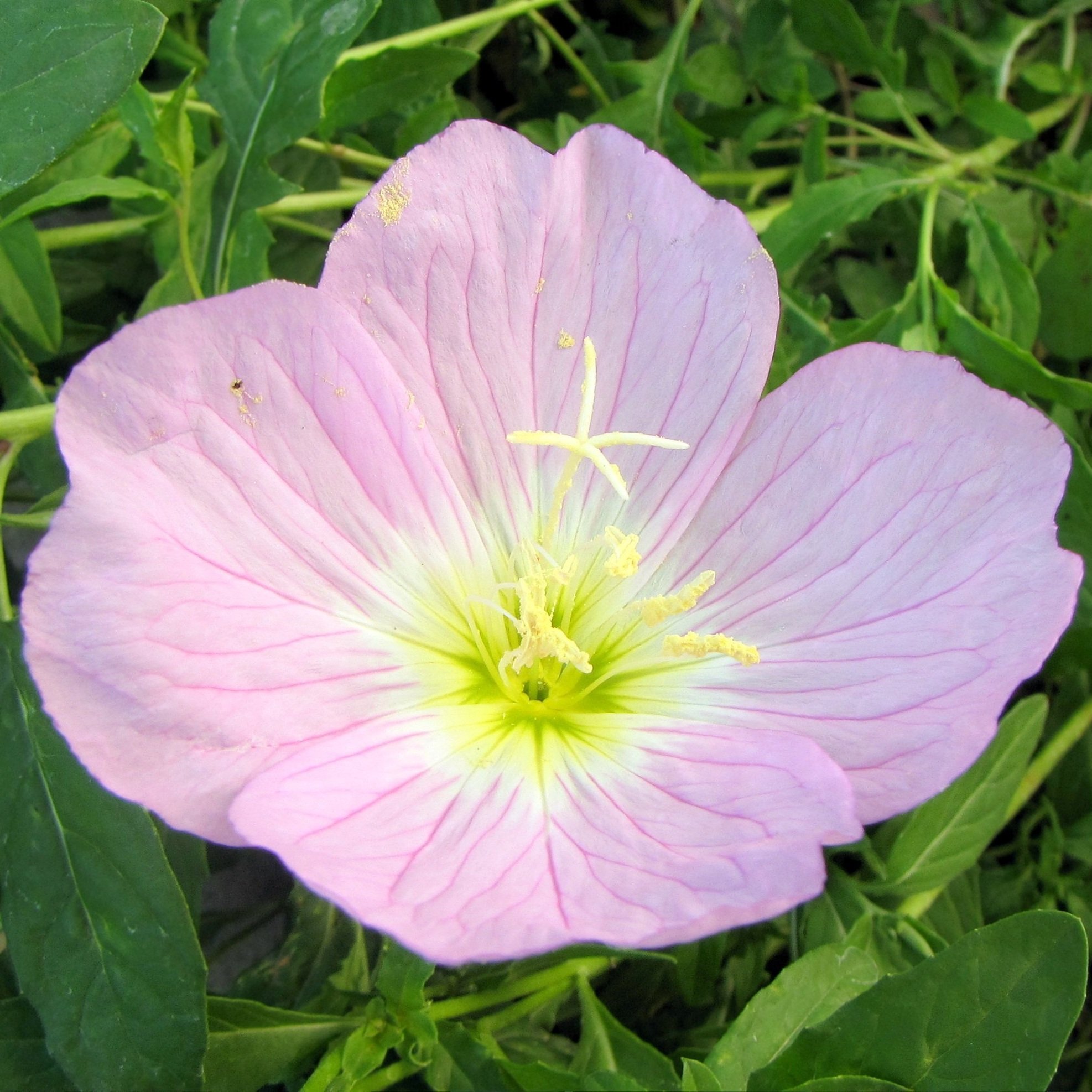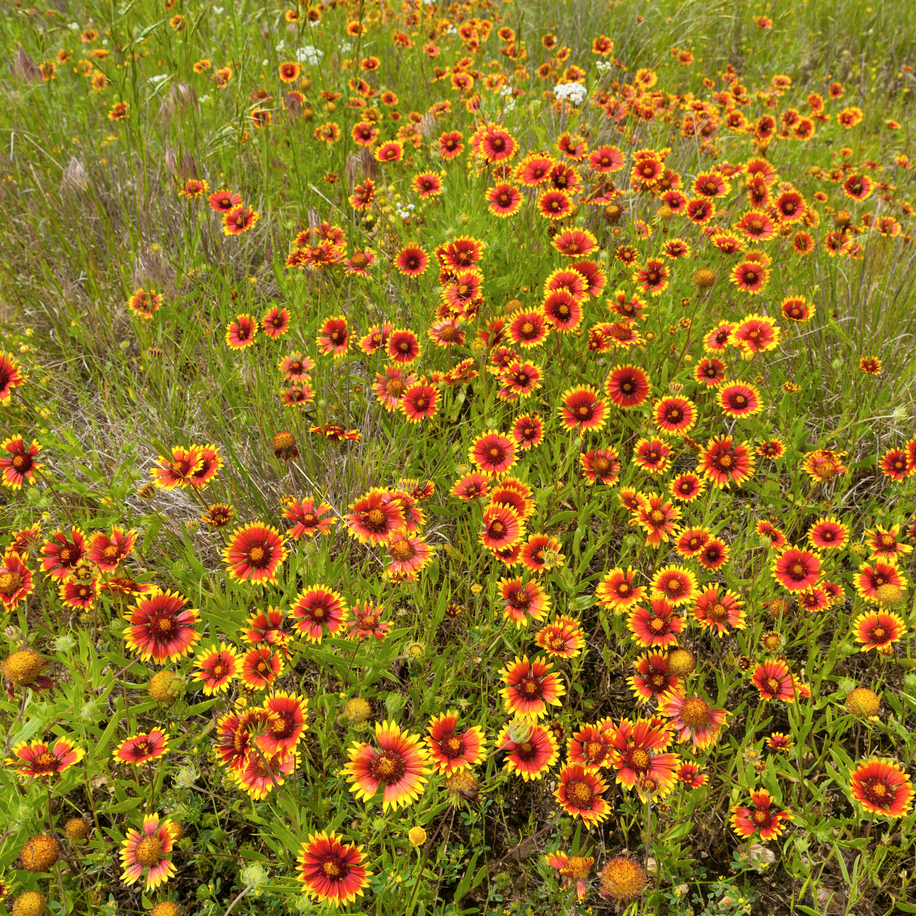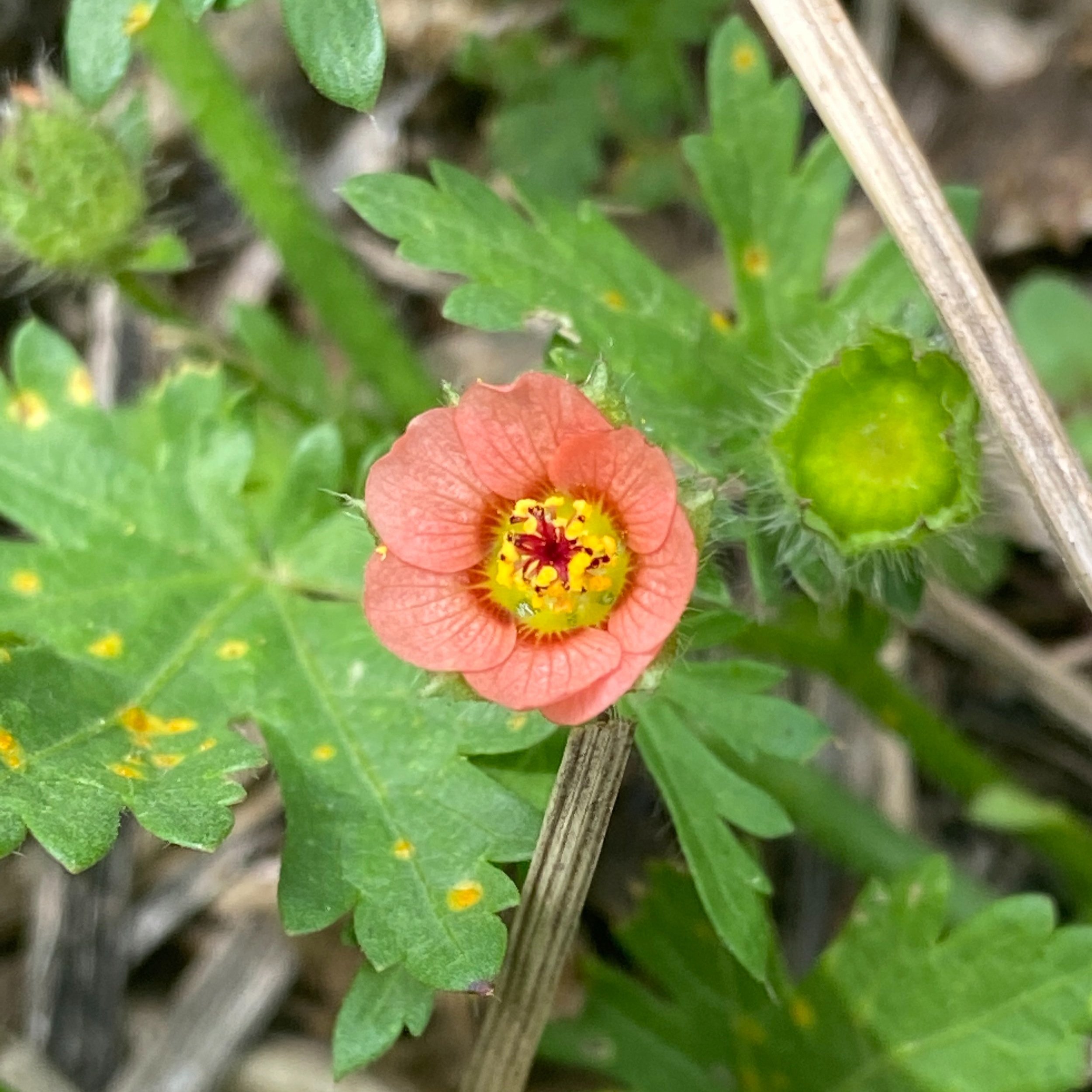Wildflowers
Common Poppy
Common Poppy (scientific name: Papaver rhoeas) is an annual herbaceous species of flowering plant in the poppy family native to Europe, Asia, and Northern Africa, and ranges from being invasive to naturalized throughout the United States. Common Poppies grow in clumps up to 24” tall and 12” wide. They prefer full sun and rich, well-drained soils, and can often be found along roadsides, field edges, and in cultivated gardens.
Poppies are usually red, but the flowers can also be purple or white. They have green stems and leaves.
In Persian literature, red poppies, especially red corn poppy flowers, are considered the flower of love. They are often called the eternal lover flower. In classic and modern Persian poems, the poppy is a symbol of people who died for love.
Spreading Aster
Spreading Aster (scientific name: Symphyotrichum patens) is one of our native wildflowers in Texas that blooms during the months of August through October. It is often found in woodland areas like Pease Park as it tolerates some shade. Aster attracts bees and butterflies to the area and it presents with blue, purple, or lavender flowers.
Pink Evening Primrose
Pink Evening Primrose (scientific name: Oenothera speciosa) is a native wildflower to the prairies of Texas. It is a perennial and spreads to form extensive colonies. Its large, four-petaled flowers, solitary from leaf axils, range in color from dark pink to white.
As the common name implies, most evening primrose species open their flowers in the evening, closing them again early each morning. The flowers of some members of the genus open in the evening so rapidly that the movement can almost be observed. However, Pink Evening Primrose populations in the southern part of its natural range (Texas) open their flowers in the morning and close them each evening.
Several species of insects are attracted to Pink Evening Primrose, most notably moths.
Bluebonnets
Texas Bluebonnet (scientific name: Lupinus texensis) is the most iconic spring bloom in Texas. It is one of five Bluebonnets recognized as the Texas State Flower, the other four being Lupinus subcarnosus, Lupinus havardii, Lupinus concinnus, and Lupinus plattensis. The five lupine species grow in different areas of Texas, while Lupinus texensis is most prominent in Central Texas. It is found in garden beds, along roadsides, and throughout pastures.
Much like the Mexican Plum, flowering Bluebonnets let us know spring has arrived in Texas, as it is one of the first native wildflowers to bloom for the season. You can find Bluebonnets across Pease Park, but especially in the wildflower meadow at Lamar Terrace (the corner of N. Lamar Blvd. and 29th Street). They can also be found along the roadside of North Lamar.
The Bluebonnet has blue flowers with white accents and green stems and leaves. Texas Bluebonnets are highly beneficial to native bees, specifically Bumble Bees, and act as a larval host for Hairstreak and Elfin butterflies.
Firewheel
Firewheel (scientific name: Gaillardia pulchella) is a North American species of short-lived perennial or annual flowering plants in the sunflower family. Firewheel is a hardy plant, not picky about soil, though sandy and well-drained soils are best. It has a high drought tolerance and enjoys a dry, hot climate in full sun. Growing to be about 12-24” tall, this bold native wildflower can be found in meadows, along highways, and in garden spaces from early summer to late fall. In Pease Park, it can be found within the meadow at Caswell Shoals (near the corner of North Lamar Blvd. and W. 24th St.).
Its flowers are red, yellow, and brown. It is a larval host to the bordered patch butterfly (Chlosyne lacinia) and the painted schinia moth (Schinia volupia), which feed upon its foliage.
Carolina Bristlemallow
Carolina Bristlemallow (scientific name: Modiola caroliniana) is a low creeping perennial, likely native to South America, but is widely naturalized throughout the tropical and warmer temperate world. It is considered native in Texas and can be found within both desert and riparian ecosystems. It is often referred to as a weed and typically grows in urban lawns and gardens and in disturbed areas where it can get some extra water.
Carolina Bristlemallow requires full sun and is drought tolerant, making it a great addition to a xeric garden. It has reddish pink or pinkish orange flowers. It flowers in the spring and summer.


